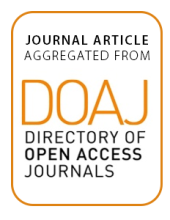/ library resources
Showing items 1 through 8 of 8.Agricultural intensification is considered essential for meeting growing demand for food and biomass for energy purposes. Intensifying grasslands is under-represented, although it is a promising option given their large land area and relatively low management levels.
Development has fragmented urban nature, and target sites for conservation strategies need to be those that have long maintained their original land cover in a clustered area.
Alpine pastures and meadows are agroecosystems of biological, cultural-historical, and economic importance that are undergoing profound imbalances and which are in a rapid decline due to changes in management and/or abandonment.
The aim of this research was to assess differences in the quantity and quality of herbage and invertebrate generalist predator abundance among permanent and temporary pastures.
A field characterization of the grassland vegetation structure, represented by the coverage of grass canopy (CGC) and the grass height, was carried out during three years (2009–2011) in a priority area for the conservation of grasslands of North America.
Monitoring of soil moisture dynamics provides valuable information about grassland degradation, since soil moisture directly affects vegetation cover.
The effects of landscape context on habitat quality are receiving increased attention in conservation biology.
Cattle grazing and fire are common types of management on natural ecosystems, generating several threats to the conservation of native vegetation (e.g., changes in species richness, cover, and abundance, mainly of bovine-palatable species).
Land Library Search
Through our robust search engine, you can search for any item of the over 73,000 highly curated resources in the Land Library.
If you would like to find an overview of what is possible, feel free to peruse the Search Guide.






